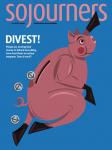ONE OF MY favorite descriptions for the people of God, what the New Testament calls the “body of Christ,” is the evocative language of “the beloved community” used by Martin Luther King Jr. during the civil rights movement.
A beloved community is a powerful vision of a new coming together, a new community that welcomes all peoples in their diverse ethnicities and nationalities. Everygroup, clan, and tribe is included and invited in. That dream and vision undergirded King’s movement for civil and voting rights, both spiritually and philosophically, and deeply reflected his own underlying moral belief and hope as a Christian minister.
Yet in one of his most famous quotations, King also said this: “I am ashamed and appalled at the fact that 11 o’clock on Sunday morning is the most segregated hour in Christian America.” He said this in 1953, while he was still associate pastor at his father’s Ebenezer Baptist Church in Atlanta. But obviously, and most painfully, that quote is still true today.
Incredibly, prior to 1998 there was no good national data on how many U.S. churches were “multiracial.” In this context, a multiracial congregation is one in which less than 80 percent of members belong to any single race. This definition is now widely used by scholars of modern religion, including Michael O. Emerson, the definitive scholar on multiracial congregations. According to scientific surveys of U.S. congregations of all faiths, Emerson has observed that “7.4 percent of U.S. congregations were multiracial in 1998, [and] in 2010 that figure had grown to 13.7 percent.” In other words, truly multiracial congregations in the United States are still very much the exception to the rule. At the same time, it is highly encouraging that their number nearly doubled in just over a decade.
Some might ask: Why should we be concerned about whether or not people of different races worship together? Well, when you look at what the Bible says about what the “body of Christ” is supposed to be—and wasduring the earliest days of the beginning church—the racial segregation of U.S. churches is nothing short of sinful. Paul tells us in Galatians 3:28 that “there is no longer Jew or Greek, there is no longer slave or free, there is no longer male and female; for all of you are one in Christ Jesus.” When we look at our largely segregated churches, how can we say that we are living into that vision? King’s description of the life of the church was indeed “appalling” when he first uttered these words in the 1950s, and the reality of churches separated by race is still appalling today in the first quarter of the 21st century. I believe there is a biblical call to create multiracial communities of faith, and we must examine how we can make progress toward that wonderful but difficult goal.
The apostle Paul describes how in Christ, we are one body (1 Corinthians 12:12-26). He compares the church to the human body, saying when “one part suffers, all parts suffer with it.” What does that mean when brothers and sisters in black churches suffer the pain of economic discrimination, disproportional negative experiences with the criminal justice system, and the police shooting deaths of all-too-many young black men? Do all the parts of the body in white churches suffer with the parts of the body in black churches when they do? If white churches truly did, that would change the whole conversation about race in the U.S. Right now, there are two different conversations going on in our churches about race: one in our white churches and one in our churches where people of color are the majority. Instead, we need to be talking to each other.
To their credit, some church denominations and organizations have gotten this message. The Evangelical Covenant Church organizes “Sankofa Journeys,” which pair Christians of different races together in four days of intensive prayer and travel through major sites of past and present racial injustice. The Southern Baptist Convention dedicated a national leadership summit held in March to the topic of race, and leaders there spoke candidly about the denomination’s racist past. Many other churches and church organizations are active in promoting racial justice. Yet to the extent that the church is trying to repair racial injustice in society while congregations themselves remain largely homogeneous, true progress will be limited.
It’s not easy to face the deep wounds of racism in our country and in our church. It requires self-examination and repentance. But just as Christ reconciled us to God, let us show each other the peace and mercy we have received. The church must be at the forefront of racial reconciliation and justice and healing in this country. It is nothing less than our calling.

Got something to say about what you're reading? We value your feedback!
